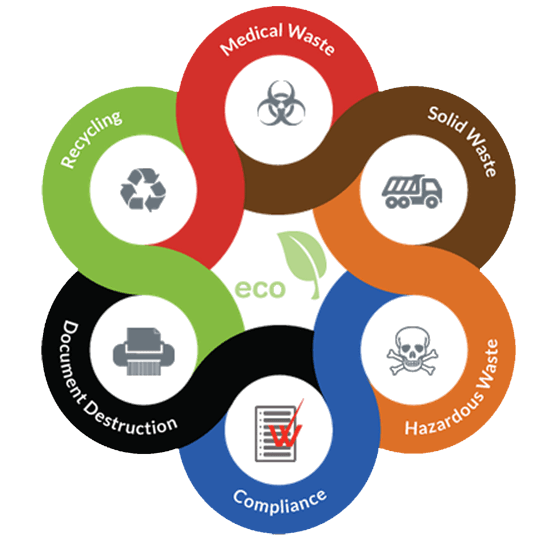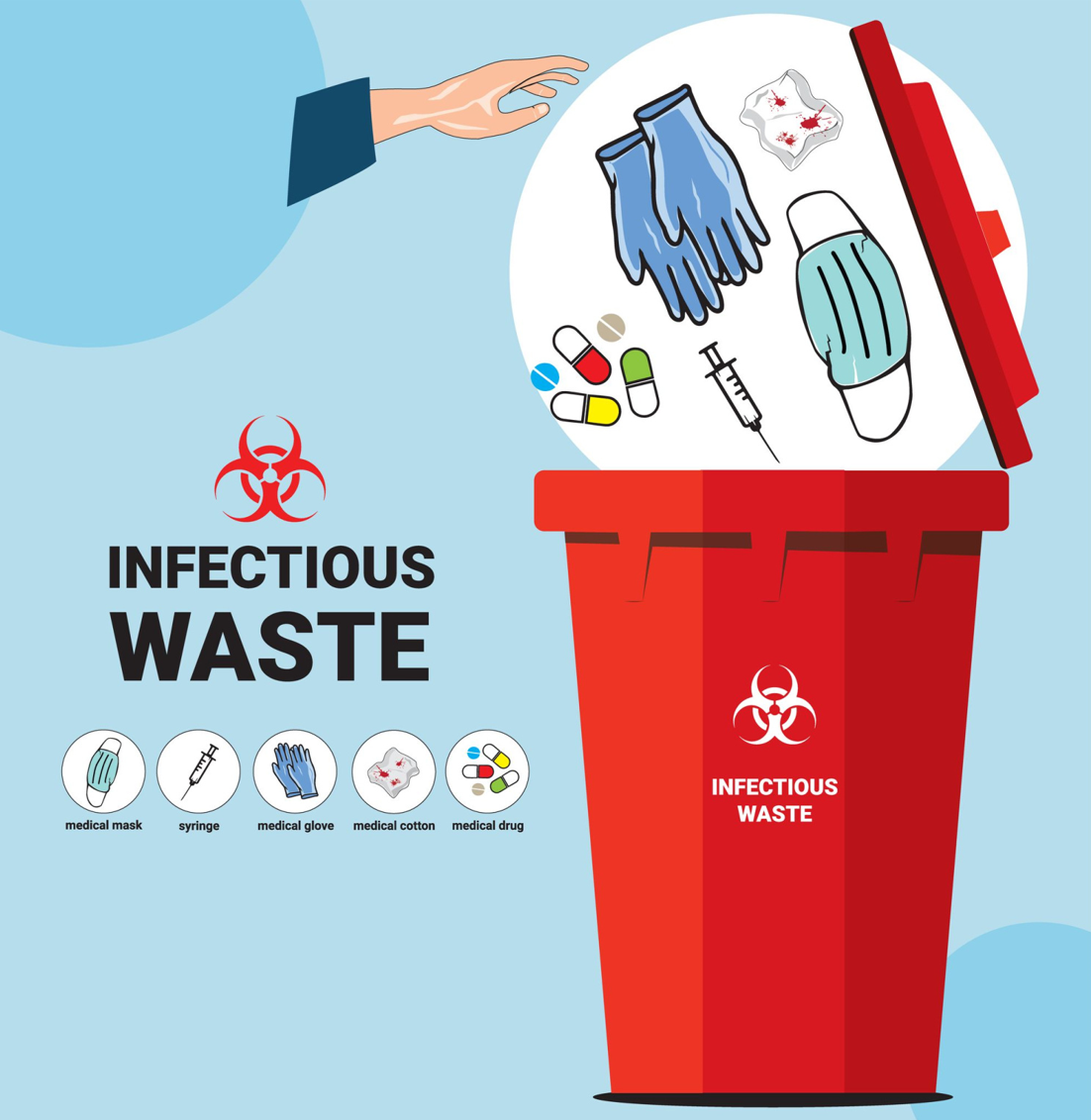Compliance and Regulations for Medical Garbage Disposal
Conformity and policies for medical waste disposal play a crucial function in ensuring the security and well-being of both medical care professionals and the general public. Appropriate management of clinical waste is necessary to protect against the spread of infections, protect the environment, and keep public health. These laws incorporate numerous elements, consisting of the classification and segregation of medical waste, correct storage space and taking care of procedures, as well as transportation and disposal approaches.
Significance of Conformity
The importance of conformity with policies for medical waste disposal can not be overstated. Correct disposal of clinical waste is critical for ensuring the safety and security and health of medical care employees, clients, and the public. Medical waste, that includes products such as used needles, contaminated handwear covers, and biomedical waste, can posture severe health and wellness risks otherwise taken care of and taken care of properly.
Conformity with policies guarantees that medical waste is managed in a method that reduces the potential for direct exposure to contagious diseases and harmful materials - medical waste removal. It aids stop the spread of infections, such as HIV, hepatitis B and C, and various other bloodborne microorganisms. Compliance additionally plays a crucial role in securing the atmosphere by preventing contamination of water resources, soil, and air
Failing to conform with policies can cause serious consequences for medical care facilities, consisting of fines, lawsuit, and damages to their track record. Additionally, non-compliance might endanger the health and wellness and safety of medical care employees, clients, and the community.
Compliance with laws for medical waste disposal needs adherence to specific standards and protocols. These may include appropriate segregation, product packaging, labeling, and storage of medical waste. It likewise includes using accepted disposal techniques, such as landfilling, incineration, or autoclaving, depending upon the type of waste.
Regulative Agencies and Bodies
Regulatory agencies and bodies play an essential function in overseeing compliance with guidelines for clinical waste disposal. These organizations are liable for establishing guidelines, standards, and procedures to ensure the correct and safe handling of medical waste. They enforce and keep an eye on conformity to protect public wellness and the atmosphere.
Among the most popular governing companies in the United States is the Epa (EPA) The EPA is accountable for controling the storage, transportation, treatment, and disposal of clinical waste. They establish standards for waste generators, carriers, and treatment facilities to adhere to, making certain that all essential safety measures are taken to prevent the spread of conditions and contamination.
One more essential regulatory body is the Occupational Safety And Security and Wellness Management (OSHA) OSHA sets guidelines and requirements to protect employees from job-related hazards, consisting of those associated to medical waste. WasteX Medical Waste Disposal. They supply guidelines for the risk-free handling and disposal of clinical waste to shield workers in healthcare centers
In addition to these government agencies, individual states additionally have their own regulatory bodies that look after clinical waste disposal. These agencies may have their own particular regulations and needs that must be adhered to.

Classification and Partition of Medical Waste
To ensure appropriate management of medical waste, it is important to identify and segregate it according to established standards and procedures. medical waste removal. Classification and partition play a vital duty in decreasing the threat of infection, securing the environment, and making sure the security of healthcare employees and the general public
Clinical waste is categorized into various classifications based on its possible hazard degree. These groups consist of contagious waste, pathological waste, sharps waste, pharmaceutical waste, chemical waste, and radioactive waste. Each category requires details handling, disposal, transport, and storage approaches to minimize the risk of direct exposure and contamination.
Partition of clinical waste includes separating various sorts of waste at the resource. This process ensures that waste with different hazard degrees is not combined, minimizing the potential for cross-contamination and making disposal treatments a lot more efficient. Appropriate partition is attained through the use of color-coded tags and containers, which assist medical care workers and waste administration workers manage each kind and identify of waste appropriately.
In enhancement to category and partition, medical care centers must likewise follow neighborhood, state, and federal policies regarding clinical waste management. These policies describe certain demands for storage space, transport, therapy, and final disposal of clinical waste, making sure compliance and maintaining public wellness and safety and security.
Correct Storage and Managing Procedures
Appropriate storage space and taking care of treatments play a vital function in ensuring the secure and certified monitoring of clinical waste. Clinical waste, that includes items such as utilized syringes, polluted handwear covers, and expired medicines, can pose major health and wellness and ecological risks otherwise dealt with appropriately. It is essential for healthcare centers and other generators of clinical waste to execute rigorous storage and handling methods.
To start with, medical waste must be stored in durable, watertight containers that are particularly created for this purpose. These containers ought to be labeled with the global biohazard icon and words "clinical waste" to plainly suggest the contents. Additionally, the containers ought to be kept safely shut to avoid any possible leak or spillage.
Additionally, it is necessary to segregate various kinds of medical waste to stop cross-contamination. Sharps, such as scalpels and needles, need to be stored in puncture-resistant containers to reduce the threat of injuries - WasteX Medical Waste Disposal. Chemical waste, such as anti-bacterials and solvents, should be saved independently from various other kinds of clinical waste to stop chain reactions or unsafe direct exposures

Transportation and Disposal Techniques
Medical care centers should make sure the safe transportation and appropriate disposal of their clinical waste to adhere to laws and shield public wellness. Transportation and disposal methods play a vital duty in protecting against the spread of infectious diseases and reducing the ecological influence of medical waste.
To carry clinical waste, health care centers must make use of puncture-resistant and leak-proof containers that are classified with the biohazard sign. These containers must be firmly secured to avoid any leakage during transportation. Furthermore, health care centers ought to develop methods for the transport process, including making use of devoted automobiles and trained employees.
As soon as the medical waste reaches the disposal facility, it goes through different methods of treatment. One usual method is incineration, which involves shedding the waste at high temperature levels to damage virus and minimize the quantity of waste. One more technique is autoclaving, which makes use of steam and pressure to decontaminate the waste. After therapy, the waste is usually sent out to a land fill or a waste-to-energy facility for final disposal.
It is vital for medical care facilities to deal with accredited and permitted waste administration companies to guarantee appropriate transportation and disposal of medical waste. These companies have the know-how and sources to manage clinical waste safely and in compliance with regulations.
Conclusion
Finally, conformity with laws for clinical waste disposal is of utmost significance to guarantee public health and security. Regulatory agencies and bodies play a vital function in imposing these regulations. Correct category and partition of medical waste, as well as adhering to ideal storage and dealing with treatments, are crucial to protect against contamination and the spread of illness. Appropriate transport and disposal techniques should be carried out to reduce environmental impacts. Overall, adherence to conformity and guidelines is needed to efficiently handle medical waste.
Medical waste, which includes items such as utilized needles, infected handwear covers, and biomedical waste, can position major health and wellness risks if not handled and disposed of properly.
These classifications include contagious waste, pathological waste, sharps waste, pharmaceutical waste, chemical waste, and contaminated waste.Partition of medical waste involves separating different types of waste at the source. Proper partition is attained via the use WasteX Medical Waste Disposal of color-coded containers and labels, which assist healthcare employees and waste administration personnel recognize and deal with each kind of waste appropriately.
Chemical waste, such as solvents and anti-bacterials, must be stored individually from other kinds of medical waste to prevent chemical reactions or unsafe exposures.